My mom is the bomb, you guys. She offered to help me make curtains, a bedskirt, a changing pad cover, and a quilt for baby girl. And after she did all that I somehow convinced her to continue making Roman shades until she was blue in the face. Not really, but man---I am SO glad I didn't have to make these by myself. It's not that they are particularly difficult or require a lot of skill but I guess I just don't have the patience for these types of projects. Set me up in a room and I'll paint walls all day long. I'll paint canvases and cribs and shop and decorate. But anything that remotely resembles sewing (which, this tutorial doesn't even require THAT) and I go bonkers.
So I sent her a few Pinterest links and this one was the main site she used to make the shades. But she did change a few things around and the instructions she sent me are VERY detailed. As in, I should really try to make the final Roman shade we want in our upper bathroom. But it's just so darn easy to let the pro do it, you know (wink, wink, mom).
I knew I wanted the shade to be mounted inside our window frames because, well, I am really into staring at the WHITE paint that I so meticulously slaved over for so long. I really like the look of an inside mount more than putting the shade on the outside of the wood/window area, too. So my only duty (besides buying the fabric) was to measure each window and buy the mini blinds. We measured from the inside of each window and found really cheap blinds for about $4 a pop at Menards. My mom somehow calculated how much fabric we would need per window treatment and that is how I purchased the fabrics of my choice. I believe for a window that is 29.5 inches wide, and 54 inches long we needed 1 5/8 yards. Not sure if that helps at all. I am SO bad with calculating inches to yards---probably another reason I am not into sewing right now.
Let's look at some 'real time' pictures just to get you pumped up for this project, shall we?
The Kitchen shades:
Truman's shades:
Baby girl's shades:
(they aren't usually this wrinkled when let down, but I ALWAYS have them up in baby girl's room)
Are you ready to make them? I just copy and pasted my mom's email to me into this post, so if the alignment and font seem weird, that is why. Not sure why her pictures don't always show up either---I see them in my blogger preview, but not when I view the actual blog. Oh, well. Enjoy!
Supplies
needed:
-mini blind
-Fabric and liner (Medium weight fabric makes a nicer
shade than thinner fabric, may not need a liner if you don't care about blocking out all of the sun. We used the liner in the kids rooms but skipped them in the kitchen and family room)
-cans or pins
-wax
paper
-fabric glue,
-brush,
-Ruler,
-tape measure,
-cutters to clip off the hook,
-pencil,
-sharpie,
-scissors,
-heat n bond if you line the shades,
-iron,
-rotary cutter/cutting
board/rotary guide.
Roman Shades made from Mini
Blinds: by Julia's mom, Pam
- Determine the size mini blind you will use.
- Remove the 3 round little stoppers on the bottom big slat. Untie the knots.
- Lay out the mini blind. Clip the 3 ladders being extremely careful not to cut the larger cord inside two of the ladders.
- Remove all of the slats.
- Clip off the hook on the top header
- Glue 10 slats together (to be used as a bottom weight later). Then glue 4 (or how many slats you determine you will need) additional sets of 3 slats together. You end up with one stack of 10 glued together and 4 stacks of three. (The vinyl slats are thin and this helps reinforce them).
- Determine the FINISHED size of your curtain. Add 3 inches to width and 3 inches to length for dimensions to cut fabric.
- Cut out the fabric
- Divide the FINISHED length by the number of slats you want to use ( Our finished length was 53 inches so we divide 53 by 4 slats and got 10.6 inches between all 4 slates). There is a calculator that might be helpful at http://www.terrelldesigns.com/Instructions
- Iron the fabric to get out any wrinkles and the center fold line. I used spray water and steam iron.
- Draw lines 1 ½ inches from the side edges of fabric.
- Iron the sides along the lining line you drew on the fabric and then turn under the side ¼ inch and iron. (These pictures are taken with shades lined)
- Brush on glue, turn under ¼ inch. Brush on glue and fold along line and glue onto the lining. Avoid over brushing an area. This makes the fabric stretch and pucker.
- Place the top header along a line you draw one inch from the top of the fabric. Center and mark edges. (Picture is of lining along the top drawn line with a notch cut out for area NOT to be glued)
- Glue header to fabric using the line as a guide. Leave the ends unglued. After you install the shades you will glue (or Velcro) these ends in place.
- Use the measurement you got in #8. On the wrong side of the fabric, measure from the top of the header to the top of the first slat. Center, mark edges, the top and bottom of this slat with a pencil (I just drew all the way around the slat). Measure the top of this first slat to the top of the next slat and mark on both sides of the slat. Continue for all slats. (Better to mess up on the drawn lines than the glued down slates. See my drawn and messed up, erased markings)
- String on the slats. String on the stack of 10 slats and finally string on the thicker bottom slat. Glue the stack of 10 onto the bottom thick slat. Make sure you keep glue away from the strings. I put a heavy book on it to hold it down while it dried.
- Pull the strings so that they are straight – not really tight – but no slack in them. With a sharpy or pen mark where the string just comes out from the stack of slats.
- Raise the bottom heavy slat up the string so you can tie a knot so that the mark still shows. Measure & mark finished length from the top of the header to make sure you have the right length. Run a line of glue along the line at the bottom heavy slat. Replace the bottom heavy slat along the glue line and put cans in place to hold the slat in place while it dries.
- Now you glue the slats into place. After some experimentation I think it is best to put the glue on the rounded side of the slat, brush on the glue on smoothly. Using wax paper under the slat so you can get glue all the way to the edges. Stay 1 inch away from the strings on either side. The glue can not get on the string or you can’t raise and lower the shade.
- Flip the slat over to glue into place inside the drawing of the slat. Finger press along the edges to set the glue and make sure fabric is making good contact with the entire face of the slat. I sort of pulled the fabric so that contact could be made with the entire surface. If you just lay it flat, then it will only adhere to the middle and not the edges of the slat. This will help make a crisp inside fold.
- Cut off the extra string at the bottom and tuck the extra up inside the little holes.
23.
Brush glue onto the fabric that is below
the bottom heavy slat and wrap fabric around the heavy bottom slat, making sure
it is smooth. It gives it a nice
finished look.
- I let it dry for several hours before I tried to pull the cord and see how it would fold.
- Pull the cord and play with the folds and help them to make crisp lines in the back of the shade along the edge of the slat before you install. I left the outside folds softer for a more rounded look in front.
26.
Then we decided that the
shade worked a lot better if the string came down the front of the shade instead
of the back. Actually Nate figured
this out. So now, cut around the
pully opening on the header and pull the strings through to the
front.
- Cut a strip of fabric for the top loop that will hide the pully opening. Measure the same width as you did for your unfinished shade. The length is the exact measurement that you placed between each slate. Mark 1 ½ inches on each side just like you did to the shade. Fold in, iron and glue like you did in #11, #12 & #13 to the shade.
- Run a line of glue along one long edge and fold, gluing the edges together.
- Now you are ready to glue this “loop” of fabric to the top header of your shade.
- Run a line of glue along the top of the header like you did in #15. Leave the ends unglued so you can install the shade. You can glue or Velcro these ends in place once they are installed.
Taa Daa -- A Roman
Shade:) Whew.
HOW TO MAKE THE LINER:
We lined
some of the blinds with “block out” lining. It made for a more substantial
shade. If you want to line the
shade:
- Cut lining to be the exact size of your finished shade. Place the lining on the wrong side of the fabric. Leave 1 inch at the top, 2 inches at the bottom and 1 ½ inches on each side. Mark around the lining.
- Insert this step now before you glue #13 edges in place.
Use Heat N Bond tape and run it
along the top of the line you draw for the slat in #16. Iron on per directions of tape. Use a
pressing cloth.
Do this for each slat. You will want to re-draw your slat lines
onto the lining now.
This step adheres the fabric to the
lining so that it acts as one piece of fabric from here on out.
-------------------------------------------------------------------
Does this seem easy to you? Go for it and let me know how it turns out?? I'll patiently wait for the final 3 shades to arrive at my doorstep once my mom finishes them back in Missouri. Spoiled? Yes, I am.

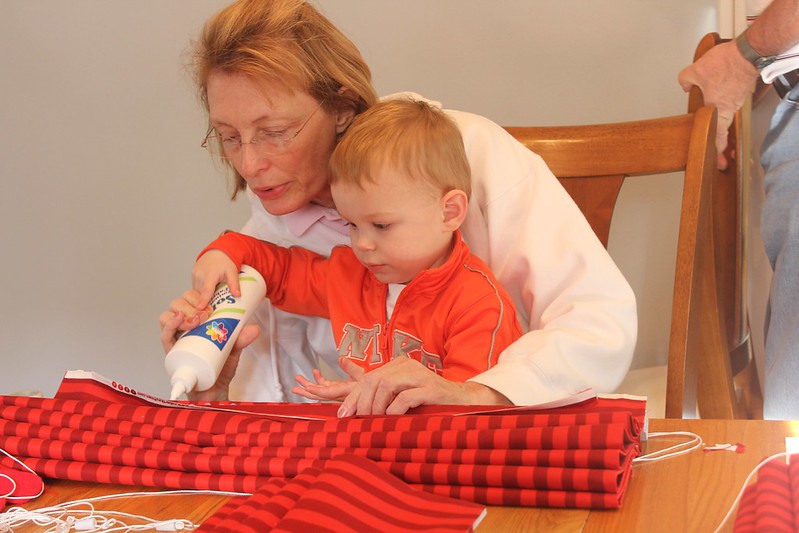


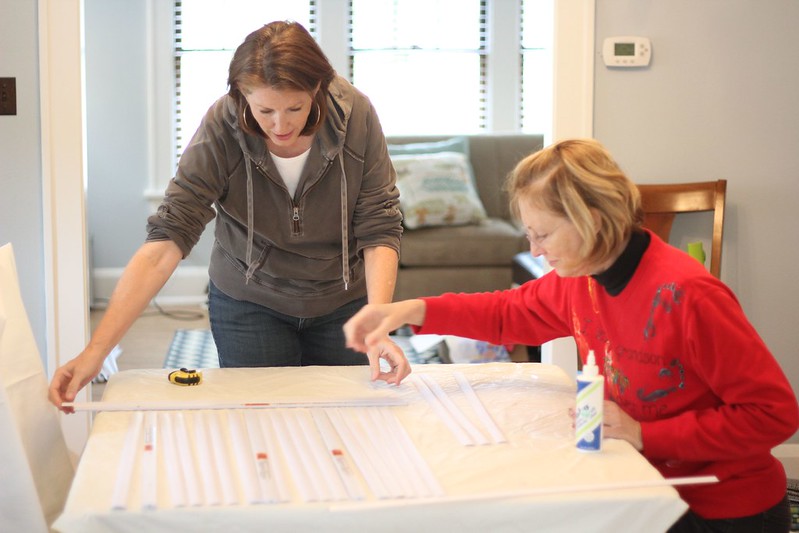

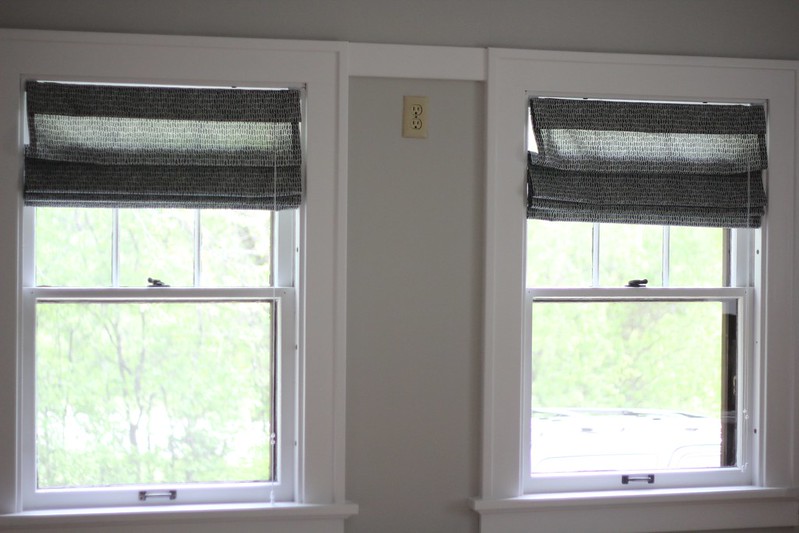
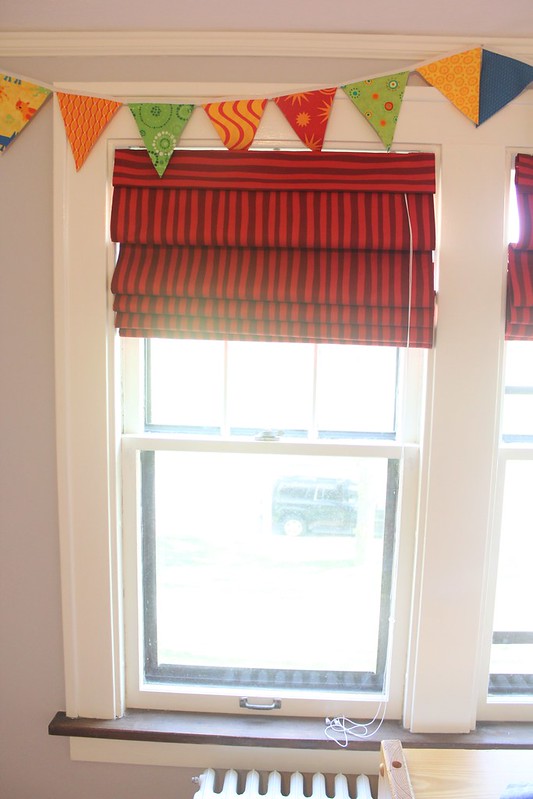
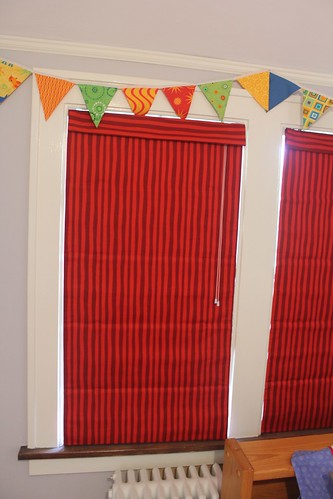
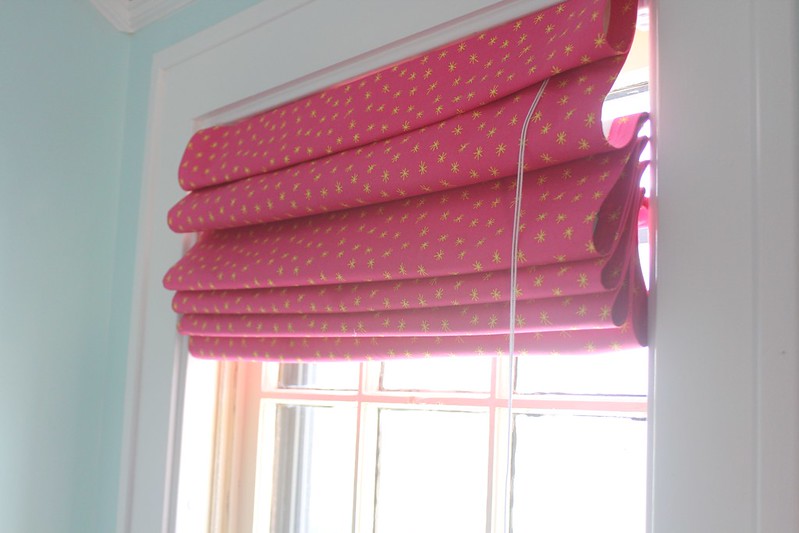

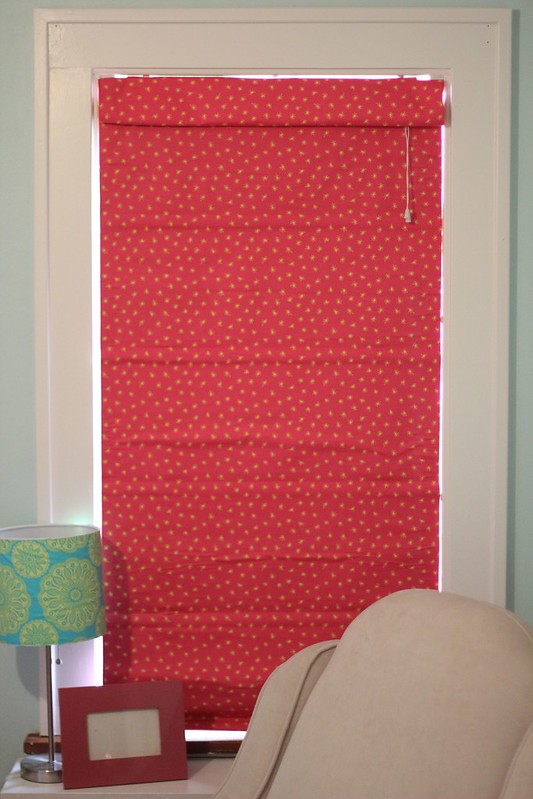



They look great!! I really need to get something up on our kitchen windows (we've only been living here THREE years with nothing, oops). Maybe I can convince my mom... ;)
ReplyDeleteLove the roman shades! Can't wait for the nursery reveal! :) (Fyi... the photos in the tutorial are not loading.)
ReplyDeleteYes I can't see the tutorial photos either.
ReplyDeleteBut this makes me want to make shades....I need more free time.
I so want to see the photos, I can read directions but I a better at seeing the photos! I love our mom's have sewing skills that we don't. What is going to happen to our poor kids, because we can't sew like them.....
ReplyDeleteThank you for all the cool updates in the house, you guys have put in a ton of work and it looks awesome. Makes me feel like a slacker! My little is 7 month old, yup right around how old Wren would be, and he has a crib.........
Hey one other question, where did you buy the Dr. Seuss print fabric? That is what little boys room will be and would much rather make the stuff than buy it, so a hint would be awesome!
The pictures show up for me sometimes---not all the time. Weird. I'm way too lazy to figure it out.
ReplyDeleteThe Dr. Seuss fabric is from my favorite little quilting store here in Milwaukee, called Patched Works (Elm Grove). Not sure you are in the area, 'unknown.'
THANKS SO MUCH TO YOU AND YOUR MOM FOR POSTING THIS!! Can't wait to get started!! :)
ReplyDeleteJulia--
ReplyDeleteThanks for the info, so not sure why I forgot to put my name in there aka unknown.
Not in the area, but I have family I just might have to send to the store. Can't wait to see the reveal of the nursery, stop making us wait.
Wow Julia, this all looks amazing! I am just an unknown, occasional follower, having stumbled on your blog through coincidence. But you are such an inspirational person, I should come here more often. Love the blog, love what you've done to your new home and wish you all thr happiness with your growing family!
ReplyDeleteLouise (from Holland)
Mothers really know best. That's why they are the ones we should consult first, especially with home decor emergencies. Anyway, I liked the one your mom did for your baby girl. It's perfectly aligned. And the color you chose was pretty nice, too. It's very easy on the eyes.
ReplyDeleteRoxie Tenner